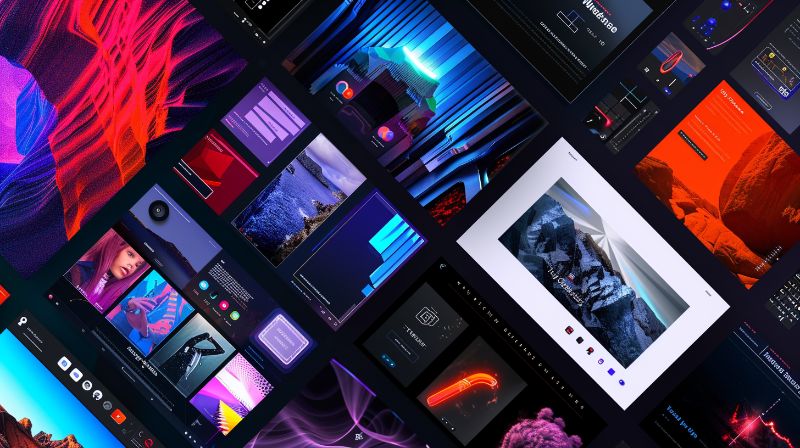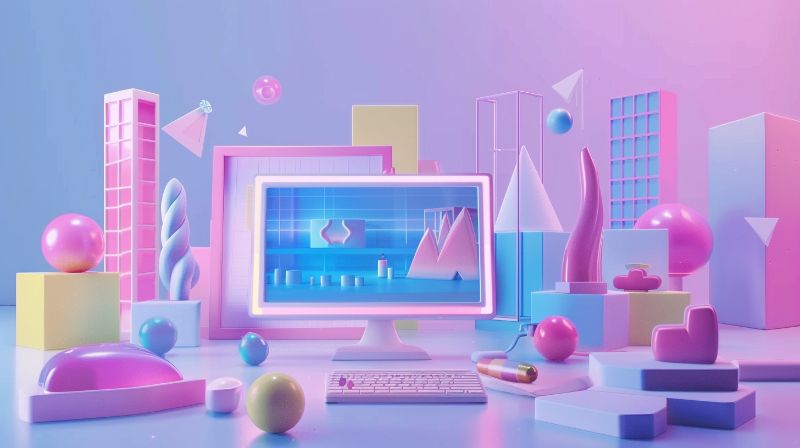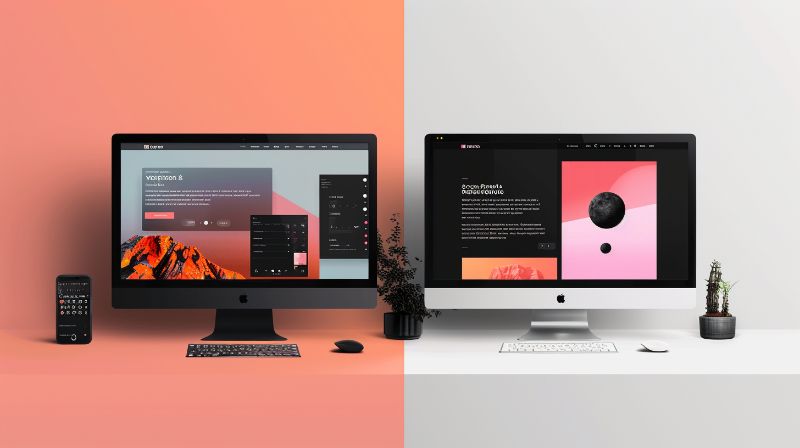Top Trends in Web Design for 2025
Stay ahead with the latest web design trends for 2025, from bold typography and dark mode to immersive 3D visuals and AI integration.
5 min read · Apr 20, 2025
The landscape of web design is constantly evolving, driven by technological advancements and changing user expectations. As we step into 2025, several key trends are shaping how websites are designed and experienced. From bold typography to immersive user interfaces, staying updated with these trends can help you create modern and engaging websites. This article explores the top web design trends for 2025 and how you can incorporate them into your projects.

Bold and Experimental Typography
Typography continues to play a crucial role in web design, and in 2025, it's becoming even more dynamic. Designers are experimenting with bold, oversized text, custom fonts, and innovative type treatments to create visually striking statements.
- Why It Matters: Typography is not just about readability; it’s also a powerful tool for conveying brand personality and drawing attention to key content.
- How to Use It: Integrate large, bold fonts for headlines and hero sections. Experiment with custom typefaces and creative arrangements to make your text stand out.

Minimalistic and Clean Designs
Minimalism continues to be a timeless trend, focusing on simplicity and clarity. Clean, uncluttered designs with ample white space are preferred for their ability to enhance usability and focus user attention on essential elements.
- Why It Matters: Minimalistic designs improve user navigation and make websites faster to load and easier to maintain.
- How to Use It: Simplify your layout, use a limited color palette, and ensure plenty of white space around key elements to keep your design clean and focused.
Micro-Interactions and Animations
Micro-interactions and subtle animations are small design elements that provide feedback and enhance the user experience. These can be as simple as button hover effects or as complex as animated loading indicators.
- Why It Matters: Micro-interactions make websites feel more responsive and engaging, guiding users through the interface with visual cues.
- How to Use It: Add animations to buttons, links, and other interactive elements to provide feedback and keep users engaged.
Immersive 3D Visuals and Interactive Elements
With advancements in web technologies, 3D visuals and interactive elements are becoming more accessible and widely used. These elements add depth and engagement, making websites more interactive and visually appealing.
- Why It Matters: 3D and interactive designs create more engaging user experiences and can effectively communicate complex information or concepts.
- How to Use It: Incorporate 3D models, animations, and interactive features like sliders and hover effects to make your site more engaging.

AI and Machine Learning Integration
Artificial Intelligence (AI) and Machine Learning (ML) are being integrated into web design to create more personalized and responsive user experiences. From chatbots to recommendation systems, AI-driven features are transforming how websites interact with users.
- Why It Matters: AI can provide personalized experiences, improve customer support, and enhance user engagement through predictive analytics.
- How to Use It: Implement AI-powered tools like chatbots for customer support or recommendation engines to provide personalized content suggestions.
Asymmetric Layouts and Broken Grid Designs
Breaking away from traditional grid layouts, asymmetric and broken grid designs are gaining traction for their ability to create unique and dynamic layouts. These designs often feature overlapping elements and non-linear arrangements that draw attention and convey a sense of creativity.
- Why It Matters: Asymmetric layouts can make your site stand out and feel more modern and artistic.
- How to Use It: Use overlapping images and text, varied grid structures, and unique placements to break the mold of traditional layouts.
Dark Mode and High Contrast Designs
Dark mode is more than a trend; it's becoming a standard feature due to its benefits in reducing eye strain and conserving device battery life. High contrast designs, whether in dark or light mode, are also gaining popularity for their striking aesthetics and improved readability.
- Why It Matters: Dark mode and high contrast designs enhance user comfort and accessibility, particularly in low-light environments.
- How to Use It: Offer dark mode as an option in your design. Use high contrast colors to highlight important elements and ensure readability across different lighting conditions. A color contrast checker can help you validate that your color combinations meet accessibility standards and provide optimal readability for all users.

Voice User Interface (VUI) Integration
As voice-activated devices and services grow in popularity, integrating voice user interfaces into websites is becoming increasingly important. VUI allows users to interact with websites using voice commands, making navigation easier and more accessible.
- Why It Matters: VUI enhances accessibility and provides a hands-free navigation option, which is especially beneficial for users with disabilities or in situations where typing is inconvenient.
- How to Use It: Integrate voice commands for search functions, navigation, and other interactive elements to offer a modern and accessible user experience.
Implementing Modern Web Design Trends
To successfully implement these 2025 trends, designers need to consider both the technical and creative aspects of modern web development:
Technical Considerations: Many of these trends require specific technical knowledge and tools. For example, implementing 3D visuals requires understanding of WebGL or CSS 3D transforms, while AI integration may involve working with APIs and machine learning services.
User Experience Focus: While trends can be exciting, always prioritize user experience. Ensure that your implementation of these trends enhances rather than hinders usability and accessibility.
Performance Optimization: Modern trends like 3D visuals and complex animations can impact performance. Always test your implementations across different devices and optimize for various network conditions.
Conclusion
Staying ahead of web design trends can help you create modern, engaging, and user-friendly websites. Whether you're adopting bold typography, embracing dark mode, or integrating AI, these trends provide numerous opportunities to innovate and enhance your designs. The key is to implement these trends thoughtfully, always keeping user experience and performance in mind while pushing the boundaries of what's possible in web design.